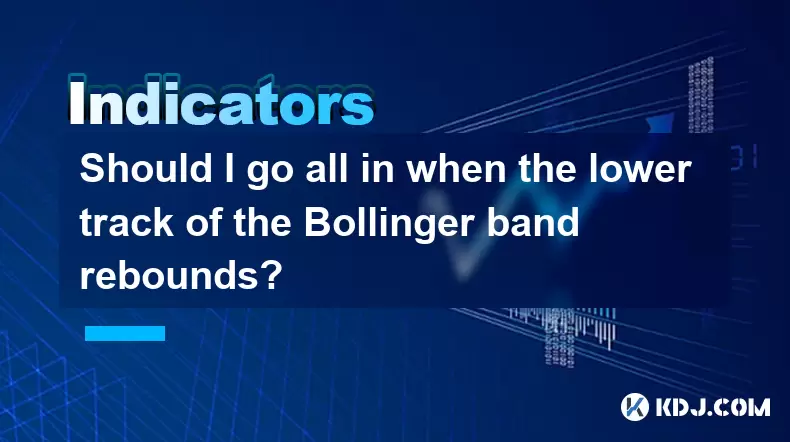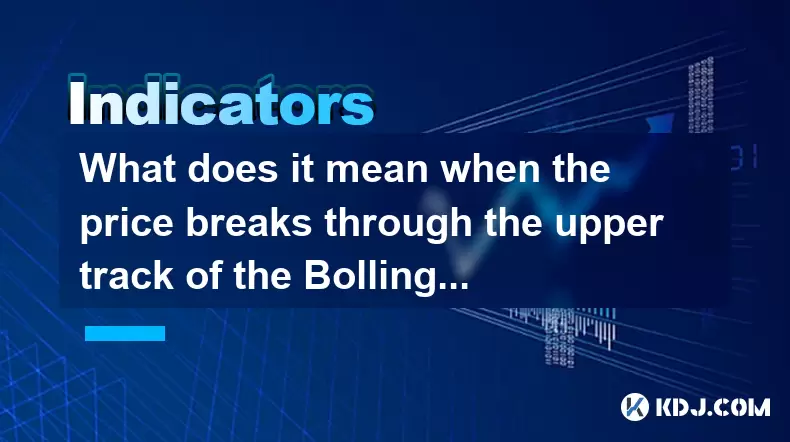-
 Bitcoin
Bitcoin $117500
-0.66% -
 Ethereum
Ethereum $3760
-1.24% -
 XRP
XRP $3.087
-2.54% -
 Tether USDt
Tether USDt $0.9999
-0.01% -
 BNB
BNB $803.6
-4.03% -
 Solana
Solana $180.3
-4.15% -
 USDC
USDC $0.9998
-0.01% -
 Dogecoin
Dogecoin $0.2218
-4.92% -
 TRON
TRON $0.3366
3.71% -
 Cardano
Cardano $0.7785
-3.73% -
 Hyperliquid
Hyperliquid $42.90
-4.75% -
 Sui
Sui $3.797
-7.45% -
 Stellar
Stellar $0.4165
-2.32% -
 Chainlink
Chainlink $17.65
-4.17% -
 Bitcoin Cash
Bitcoin Cash $561.0
-3.86% -
 Hedera
Hedera $0.2611
-4.54% -
 Avalanche
Avalanche $24.33
-7.02% -
 UNUS SED LEO
UNUS SED LEO $8.972
0.06% -
 Litecoin
Litecoin $107.6
-2.79% -
 Toncoin
Toncoin $3.254
-1.84% -
 Shiba Inu
Shiba Inu $0.00001306
-4.69% -
 Ethena USDe
Ethena USDe $1.001
0.00% -
 Uniswap
Uniswap $10.10
-4.83% -
 Polkadot
Polkadot $3.902
-4.63% -
 Monero
Monero $315.1
-2.57% -
 Dai
Dai $1.000
0.02% -
 Bitget Token
Bitget Token $4.499
-2.53% -
 Pepe
Pepe $0.00001145
-7.38% -
 Cronos
Cronos $0.1479
6.07% -
 Aave
Aave $281.3
-4.07%
Should I go all in when the lower track of the Bollinger band rebounds?
A Bollinger Band rebound may signal a reversal, but always confirm with volume, RSI, and support levels before entering—never go all in on a single signal.
Jul 29, 2025 at 05:14 am

Understanding the Bollinger Bands Structure
The Bollinger Bands are a widely used technical analysis tool developed by John Bollinger. They consist of three lines: a simple moving average (SMA), typically set at 20 periods, and two outer bands that represent standard deviations above and below the SMA. The lower band is calculated by subtracting two standard deviations from the SMA. When price touches or moves below the lower band, it often signals oversold conditions. A rebound from the lower band suggests potential upward momentum, but this does not automatically justify an aggressive trading decision like going all in.
Traders must understand that the bands expand and contract based on volatility. During high volatility, the bands widen, and during low volatility, they contract. A touch of the lower band during a period of high volatility may carry less significance than a touch during low volatility, where the rebound could indicate a stronger reversal signal. Therefore, interpreting the context of the rebound is essential before making any trading decision.
What Does a Lower Band Rebound Indicate?
A price rebound from the lower Bollinger Band often suggests that selling pressure has diminished and buyers are stepping in. This can be interpreted as a potential short-term reversal or correction in a downtrend. However, this signal alone is not sufficient to justify committing all available capital. The rebound might only represent a temporary pullback within a larger bearish trend.
It is critical to analyze whether the rebound is accompanied by increasing volume, which adds credibility to the move. A strong volume spike on the rebound increases the likelihood that institutional or smart money is entering the market. Conversely, a weak volume rebound may indicate a lack of conviction and could result in a false signal. Traders should also look for candlestick patterns such as bullish engulfing or hammer formations at the point of rebound to strengthen the signal.
Why Going All In Is a High-Risk Move
Committing all capital—going all in—based solely on a lower band rebound is an extremely high-risk strategy. Cryptocurrency markets are known for their extreme volatility and susceptibility to manipulation, especially on lower timeframes. A price touching the lower band might continue to drop, leading to a breakdown rather than a sustained reversal.
Even if the rebound appears strong, market conditions can shift rapidly due to news, whale movements, or macroeconomic factors. Without proper risk management, a single trade can wipe out a significant portion of a portfolio. Position sizing should reflect the uncertainty inherent in technical signals. Instead of going all in, traders should consider allocating a smaller percentage of capital and scaling in if the trend confirms.
How to Confirm the Rebound with Additional Indicators
To increase the reliability of a lower band rebound signal, traders should use converging indicators. One effective method is combining Bollinger Bands with the Relative Strength Index (RSI). An RSI reading below 30 indicates oversold conditions, and if it begins to rise as price rebounds, it supports the reversal thesis.
Another useful tool is the MACD (Moving Average Convergence Divergence). A bullish crossover in the MACD histogram occurring at the same time as the rebound adds confirmation. Additionally, support levels on the price chart should align with the lower band. If the rebound occurs near a historical support zone, the probability of a successful bounce increases.
- Check if the RSI is rising from oversold territory
- Confirm MACD line crossover above the signal line
- Validate that price is near a key horizontal or trendline support
- Ensure volume is increasing on the upward move
These conditions together form a more robust setup than relying on Bollinger Bands alone.
Practical Steps to Trade a Lower Band Rebound Safely
Instead of going all in, follow a structured approach to manage risk and maximize potential returns. Begin by identifying the timeframe you are trading. Higher timeframes like the 4-hour or daily provide more reliable signals than 5-minute or 15-minute charts.
- Define your entry point slightly above the candle that rebounds from the lower band to avoid false breakouts
- Set a stop-loss just below the recent swing low or below the lower band to limit downside
- Use a take-profit level at the middle band (20 SMA) or upper band, depending on trend strength
- Consider using a trailing stop if the price continues to move favorably
For example, if Bitcoin touches the lower Bollinger Band on the 4-hour chart and forms a bullish engulfing candle with rising volume, enter a long position at the close of that candle. Place a stop-loss 2% below the low of the engulfing candle and aim for the middle band as the first profit target.
Common Misconceptions About Bollinger Bands
Many new traders believe that touching the lower band is a guaranteed buy signal. This is a dangerous misconception. The bands are not support and resistance levels but statistical boundaries based on volatility. Price can remain outside the bands during strong trends, especially in crypto.
Another misconception is that mean reversion always occurs. While prices often revert to the middle band, strong trends can carry price along the upper or lower band for extended periods. In a strong downtrend, repeated touches of the lower band may signal continuation, not reversal.
Traders must also avoid using Bollinger Bands in isolation. They work best when combined with trend analysis, volume, and other confirming tools. Ignoring the broader market context increases the risk of misinterpreting signals.
Frequently Asked Questions
Can Bollinger Bands be used on all cryptocurrencies?
Yes, Bollinger Bands can be applied to any cryptocurrency chart. However, their effectiveness varies based on liquidity and trading volume. Major coins like Bitcoin and Ethereum tend to produce more reliable signals due to higher participation and less manipulation.
What timeframes work best with Bollinger Bands for rebounds?
The 4-hour and daily charts are generally more reliable for identifying meaningful rebounds. Shorter timeframes are prone to noise and false signals, especially in low-cap altcoins.
Should I use Bollinger Bands with leverage based on a rebound?
Using leverage based solely on a lower band rebound is extremely risky. Leverage amplifies both gains and losses. Without confirmation from other indicators and proper risk controls, leveraged positions can lead to liquidation.
How do I adjust Bollinger Bands settings for crypto trading?
The default 20-period SMA and 2-standard deviation settings work well for most cases. However, some traders adjust to 14-period or 26-period SMAs depending on strategy. Changing the deviation to 1.5 may reduce false signals in low-volatility phases. Always backtest adjustments on historical data.
Disclaimer:info@kdj.com
The information provided is not trading advice. kdj.com does not assume any responsibility for any investments made based on the information provided in this article. Cryptocurrencies are highly volatile and it is highly recommended that you invest with caution after thorough research!
If you believe that the content used on this website infringes your copyright, please contact us immediately (info@kdj.com) and we will delete it promptly.
- Bitcoin Price Drop: Navigating the Dip with Corporate Strategies
- 2025-07-30 07:30:12
- BNB's Bullish Cycle: ChatGPT Weighs In on the Future
- 2025-07-30 06:50:12
- XRP's Wild Ride: Open Interest, Price Crash Fears, and What's Next
- 2025-07-30 07:50:12
- SEC Greenlights In-Kind Creations: A Game Changer for Bitcoin ETPs?
- 2025-07-30 07:50:12
- Arbitrum (ARB) Price Prediction: Navigating the Ups and Downs of the Best ETH Eco
- 2025-07-30 06:50:12
- Ethereum, Ruvi AI, Presale: The Next Big Thing in Crypto?
- 2025-07-30 07:30:12
Related knowledge

What does it mean when the EMA combination crosses upward for the first time after sideways trading?
Jul 28,2025 at 03:43pm
Understanding the EMA and Its Role in Technical AnalysisThe Exponential Moving Average (EMA) is a widely used technical indicator in cryptocurrency tr...

What does it mean when the price breaks through the upper track of the Bollinger Band but the RSI is overbought?
Jul 30,2025 at 03:35am
Understanding Bollinger Bands and Their Upper TrackBollinger Bands are a widely used technical analysis tool developed by John Bollinger. They consist...

What signal does the ROC send when it rises rapidly from a low level and breaks through the zero axis?
Jul 27,2025 at 10:15am
Understanding the Rate of Change (ROC) IndicatorThe Rate of Change (ROC) is a momentum-based oscillator used in technical analysis to measure the perc...

What does it mean when the moving averages are glued together and a gap appears?
Jul 29,2025 at 07:49pm
Understanding Moving Averages in Cryptocurrency TradingMoving averages are among the most widely used technical indicators in the cryptocurrency tradi...

What does it mean when TEMA breaks through the long-term downward trend line?
Jul 29,2025 at 02:50pm
Understanding the Role of Smart Contracts in Decentralized Finance (DeFi)Smart contracts are self-executing agreements with the terms of the agreement...

What does it mean when the price breaks through the double bottom neckline and the moving averages are arranged in a bullish pattern?
Jul 28,2025 at 10:57am
Understanding the Double Bottom PatternThe double bottom is a widely recognized reversal chart pattern in technical analysis, particularly within the ...

What does it mean when the EMA combination crosses upward for the first time after sideways trading?
Jul 28,2025 at 03:43pm
Understanding the EMA and Its Role in Technical AnalysisThe Exponential Moving Average (EMA) is a widely used technical indicator in cryptocurrency tr...

What does it mean when the price breaks through the upper track of the Bollinger Band but the RSI is overbought?
Jul 30,2025 at 03:35am
Understanding Bollinger Bands and Their Upper TrackBollinger Bands are a widely used technical analysis tool developed by John Bollinger. They consist...

What signal does the ROC send when it rises rapidly from a low level and breaks through the zero axis?
Jul 27,2025 at 10:15am
Understanding the Rate of Change (ROC) IndicatorThe Rate of Change (ROC) is a momentum-based oscillator used in technical analysis to measure the perc...

What does it mean when the moving averages are glued together and a gap appears?
Jul 29,2025 at 07:49pm
Understanding Moving Averages in Cryptocurrency TradingMoving averages are among the most widely used technical indicators in the cryptocurrency tradi...

What does it mean when TEMA breaks through the long-term downward trend line?
Jul 29,2025 at 02:50pm
Understanding the Role of Smart Contracts in Decentralized Finance (DeFi)Smart contracts are self-executing agreements with the terms of the agreement...

What does it mean when the price breaks through the double bottom neckline and the moving averages are arranged in a bullish pattern?
Jul 28,2025 at 10:57am
Understanding the Double Bottom PatternThe double bottom is a widely recognized reversal chart pattern in technical analysis, particularly within the ...
See all articles

























































































